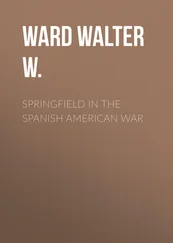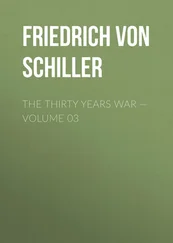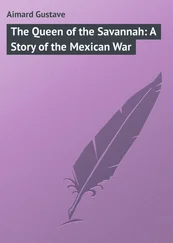But Worth had no intention of losing his prize. Three companies of the Seventh Infantry were already moving down Federation Ridge, and they took post near enough the Palace to menace any troops going from that point against the summit, cheering loudly to attract attention. The Fifth and Blanchard’s Company reinforced Childs; and about noon “with infinite difficulty,” as Worth said, a 12-pound howitzer, taken apart, was dragged up with straps. As the Palace had no roof and the windows were poorly barricaded, the interior could be searched with shrapnel. The Mexicans reciprocated, and desultory fighting continued all the morning. In the afternoon Mexican reinforcements were seen in the distance, and a prompt, decisive stroke appeared to be necessary. One body of Americans therefore went about halfway to the Palace, and concealed themselves among some rocks and bushes in a small ravine, while another were placed out of sight on the slope. Then the howitzer opened, and a force of skirmishers advanced in full view.9
Ampudia’s policy was a strict defensive, and Lieutenant Colonel Berra, who commanded at this position, had been forbidden to take the aggressive. But the howitzer had made itself extremely disagreeable; his artillery had become disabled; his only chance lay in charging; and this appeared to be the time. Foot and horse, the Mexicans therefore sallied out, and gallantly they moved up the ridge, closing their ranks when the howitzer opened them. Then the signal was given, and the men in ambush, springing up like a flight of blackbirds, fired. The enemy broke and ran; many of them did not stop till they reached the city; and the massive gate of the Palace was closed. The howitzer soon broke the gate, however, and the Americans poured in. For a time the struggle was fierce yet indecisive; but suddenly the cry was heard, “Throw yourselves flat!” and instantly over the prostrate Americans the howitzer belched a double charge of canister. This was enough; and soon the Mexicans, harassed with grape by Duncan and Mackall, who arrived now at a gallop, by the fire of a piece captured at La Libertad and by that of El Soldado, were fleeing into the city, spreading consternation on every hand. It was now about four o’clock.9
Leaving Worth and his gallant men thus in full possession of the western gate of Monterey, we will now trace Taylor’s operations at the opposite end of the town. Sunday afternoon, observing the Mexican reinforcements hastening to the summit of Independence Hill and fearing Worth might be overpowered, he displayed most of his troops before the city until dark as a menace. During the night his 10-inch mortar and two 24-pound howitzers were planted about seven eighths of a mile from the citadel, near the forward edge of a depression which screened them from the enemy, and at seven o’clock the next morning these pieces fired for twenty minutes, doubtless encouraging rather than alarming the enemy by their ineffective work.10
At the same time, to divert attention from Worth, as a note from that officer had suggested, all the available infantry were drawn out before the citadel as if to assault it. The First Division (regulars) stood at the left of this line; Quitman’s brigade—the Tennesseeans under Campbell and the Mississippi riflemen under Davis—came next it, and Hamer with the Ohio regiment occupied the extreme right. Meanwhile the work of reconnoitring continued. Believing that he would meet with no serious resistance at Monterey, Taylor had apparently felt little or no anxiety to ascertain how the town had been fortified; but now he may have realized that such information was desirable.10
In a general sense we are already aware what defences had been prepared in this quarter—particularly the barricaded streets and the stone houses turned into forts; but the situation must now be investigated more closely. West of the grand plaza and toward the northern edge of the city there was a large spring. The outlet of this flowed toward the east, widened into a pond, then contracted into a stream, passed under Purísima bridge—a heavy structure of stone by which the Marín road entered the city proper—veered a little toward the right, and finally left the town at its northeastern corner. On the inner side of this watercourse below Purísima bridge there were two simple redans capable of holding fifty or seventy men each; and some distance farther down, on the top of a rather steep slope, stood a strong earthwork named El Rincón del Diablo (The Devil’s Corner), commonly known by the Americans as El Diablo, which had two or three guns, and could accommodate a garrison of one hundred and fifty or two hundred.10
On the outer side of the watercourse an irregular but strong fortification ( tête de pont ), armed with a 12-pounder, defended Purísima bridge. East and northeast of this lay a confused suburban district occupied in part with streets, lanes, houses and huts, and in part with orchards, gardens and yards enclosed with high stone walls. Near the edge of it all, some four hundred yards in front of El Diablo, was the most advanced Mexican position. This, occupied by about two hundred men, consisted of a stone tannery building, often spoken of by the Americans as a distillery, the flat roof of which, protected with sand-bags in addition to the parapet, was held by a competent garrison, and of an earthwork in front of it called the Tenería (Tannery) redoubt, which, after having been erected and demolished, was rebuilt with desperate exertions during Sunday night.10
This fortification consisted of two short parallel sides prolonged and drawn together in front so as to meet at a sharp angle; and the north side was similarly prolonged and drawn in toward the rear so as to protect partially the opening or throat. The approaches were not cleared; the ditch was neither sufficiently deep nor sufficiently wide; steps used in the process of construction made it easy to scale the face (scarp); the parapet was completed with sand-bags made with ordinary cotton cloth; and the guns, mounted in barbette without platforms, were hard to manage on fresh dirt soaked with rain; but the redoubt, armed with a 4-pounder and an 8-pounder—its northern side protected by the guns of the citadel, its southern face by the tannery building, and its throat by El Diablo—was a serious obstacle for infantry.10
Why Taylor did not plant his mortar in front of it Sunday night—for it was plainly visible and there was a transverse ridge within short grape-shot range—drive the garrison out with half a dozen well-aimed bombshells Monday morning, and repeat the operation the following night and morning with El Diablo, is rather hard to understand. But it must be remembered that he had probably never seen, and had certainly never attacked, a scientific earthwork; these “mud-forts,” as the soldiers termed them, did not look impressive; and his plan to capture Monterey “pretty much with the bayonet” had been determined upon. He was nothing if not stubborn; and he doubtless believed that his officers and men, given a chance at the Mexicans, would certainly whip them somehow.10
Accordingly, as Twiggs, commander of the First Division, was too ill for battle, Taylor gave Lieutenant Colonel Garland this verbal order, written down by one of Garland’s aides: “Colonel lead the head of your column off to the left, keeping well out of reach of the enemy’s Shot, and if you think ( or you find) you can take any of them little Forts down there with the bay’net you better do it—but consult with Major Mansfield, you’ll find him down there.” Garland then advanced with the First and Third regiments and the Washington-Baltimore Battalion, about 800 men, and made his way forward a considerable distance over broken and obstructed ground. He soon came in sight of Mansfield, and before long that officer galloped back to meet him. Garland no doubt communicated Taylor’s orders at this time; and Mansfield, supported by some skirmishers, then went forward again.10
Читать дальше












